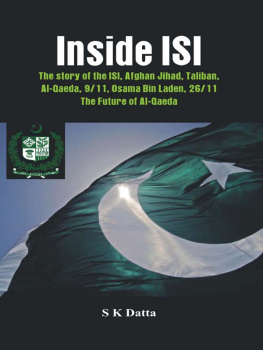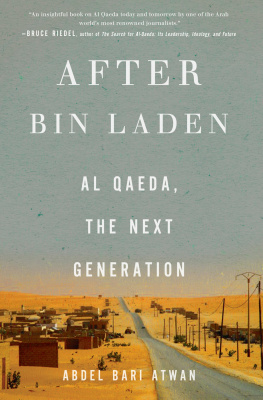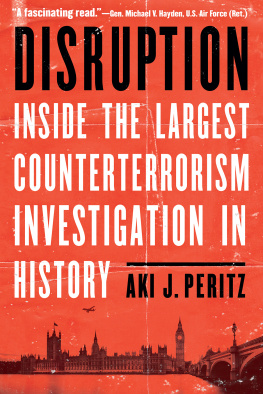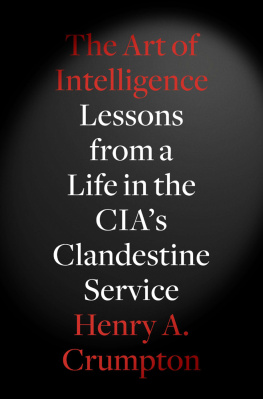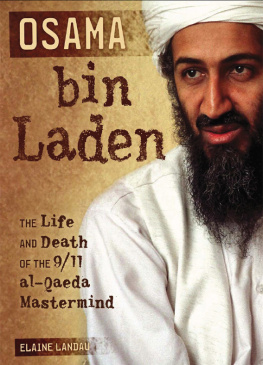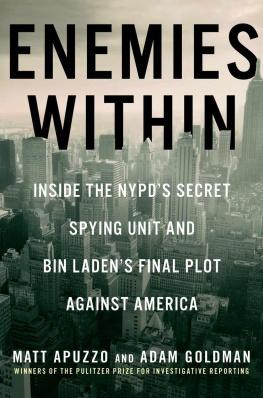Table of Contents
For Dana
A. P.
To my family, because they put up with a lot
E. R.
Safety from external danger is the most powerful director of national conduct.
ALEXANDER HAMILTON , 1787
PREFACE
T errorism is a political tornado that has the capacity to wreck lives and disrupt societies. For those unlucky bystanders caught up in its path and for those who have lost loved ones in attacks, terrorism is a random, unforgivably cruel turn of fate. The specter of terrorism causes people to think twice about normal social activities: joining a crowd, idling at a caf, boarding a plane, and taking the subway. Terrorists fray the intangible ties that bind, causing otherwise rational individuals and modern civilizations to act in irrational, medieval ways.
Al-Qaeda has been the worlds foremost purveyor of this particularly lethal form of social mayhem. Its 9/11 operation was notable not only for its destructive capacity but also for its audacity, striking the heart of the worlds superpower on a sunny Tuesday morning. And, unlike many terror groups that have focused on regional and parochial interests, al-Qaeda has taken its cause worldwide. Al-Qaeda members have attacked New York City, Madrid, London, Amman, Istanbul, Islamabad... the list goes on and on.
For all the rhetoric that followed 9/11, America did not possess a fully formed, off-the-shelf strategy to disrupt, dismantle, and defeat al-Qaeda. Rather, on September 12, the US began the first of a series of painful, halting steps to confront this determined adversary. Americas counterterrorism policy is a dense web of interconnected stories of men and women making tough choices and authorizing risky decisions. It is a complex series of tales filled with victories as well as defeats, resolute behavior, bureaucratic compromises, paths taken and those not.
As we enter the spring of 2012, Americas leaders insist that al-Qaeda is on the ropes. Upbeat evaluations have been the hallmarks of American policymakers even in the worst of times. Im convinced, defense secretary Leon Panetta said in mid-2011, that were within reach of strategically defeating al-Qaeda. Michael Vickers, who a generation ago provided creative solutions in the covert war against the Soviets in Afghanistan, expanded this sentiment, noting that within 18 to 24 months core al-Qaeda cohesion and operational capabilities could be degraded to the point that the group could fragment and exist mostly as a propaganda arm. Thankfully, this optimism may be merited. While al-Qaeda has proven itself a resilient and resourceful foe, Americas ability to track and destroy al-Qaeda operatives anywhere on earth has never been better.
BOTH AUTHORS served in sensitive US government positions. As such, various publication review boards have examined this manuscript. Some redactions remain as blacked-out text in the final version of this book. Uncle Sam also asked to include the following text: In the interest of full disclosure, this publication was submitted for pre-publication reviews to the Central Intelligence Agency to ensure that no classified information was accidentally disclosed. However, the CIAs review did not shape the case studys scope, tone, or subject material; rather, the authors remain solely responsible for this publications content.
CHAPTER 1
FIRE FROM THE SKY
The Find-Fix-Finish Doctrine in Action
T he crisp, clear morning of August 5, 2009, was the last one of Baitullah Mehsuds life. Mehsud, like many of his victims, never saw his enemy until it was too late.
What happened? Two days earlier, Central Intelligence Agency (CIA) employees, stationed thousands of miles away in suburban Virginia, had identified Mehsud in surveillance footage and ordered the lethal Hellfire missile strike via an unmanned aerial vehicle (UAV). After the dust settled, the video feed indicated that Mehsud had been sliced in half and was unquestionably dead.
In contrast to the many sanitized Hollywood storylines of American officials ordering precision air strikes against dastardly terrorists, eliminating Mehsud had been a lengthy, messy process of trial and error for the US government. The Washington Post called finding Mehsud an obsession for the CIA; this was the sixteenth drone strike that the Agency, with explicit White House blessing, had executed intending to neutralize him.
Mehsuds death exemplified not only the capacity to hunt individuals in the remote badlands of Pakistan without committing ground forces to the area, but also American willingness to allocate resources to finding and killing one manspending eighteen months, multiple strikes, significant analytical and operational capital, and countless personnel hours to do so. The death of Baitullah Mehsud was the culmination of a learning process for the US, and evidence of a new approach to countering Americas terrorist enemies in remote parts of the world.
The tenure of Baitullah Mehsuds successor, Hakimullah Mehsud, lasted less than five months. It was cut short by another UAV strike, which severely wounded Hakimullah and occurred only five days after a video surfaced on Al Jazeera showing the new TTP leader seated beside a Jordanian militant who had just killed eight CIA officers in a suicide bombing in Khost, Afghanistan. The quick turnaround time from the videos emergence to Hakimullahs neutralization sent a clear message: the US was rapidly perfecting its ability to eliminate those who seek to harm America.
This energetic national security capability, which did not exist a decade before, now stands as a core component of the strategy the US deploys to defeat its adversaries. The new doctrine for national security is based on dramatically improved drone technology, close cooperation by civilian and military organizations and with host-nation intelligence services, lethal Special Forces, and a modern interpretation of the law of war that allows for the targeting of militants. The attacks on 9/11 were the catalyst for a radical restructuring of Americas attitudes toward security and stability, especially toward the protean threat of international terrorism. The revolution in counterterrorism operations began in 2001 with the invasion of Afghanistan, which demonstrated the power of coordinated intelligence and military operations. Later, both Afghanistan and Iraq served as the laboratories for developing the capacity to suppress terrorism abroad and at home.
THE COLOSSUS SHIFTS ITS FOOTING
For much of American history, when the US looked to take on foreign threats it focused on the menace of hostile nation-states. With rare exceptionssuch as when Thomas Jefferson sent US naval forces to battle the Barbary pirates in the early nineteenth century, or when Woodrow Wilson authorized the US Army to (unsuccessfully) hunt for Pancho Villa in Mexico in the early twentieth centurythe US has understood the primary threat to its security interests as coming from national adversaries.
No longer. The 9/11 attacks brutally exposed an inability to detect and disrupt a small, highly disciplined, well-trained group of individuals bent on massive destruction. Understandably, Americas efforts in the decade since have been refocused on targeting people and small groups who seek to find ways to disturb Americas advantaged position.
This shift, however, has affected US national security strategy beyond the immediate concern of eliminating the so-called terrorist threat. Developing the ability to target individuals has proven critical to achieving other national security priorities. The policy debate about the future of Afghanistan policy that occurred within the Obama administration in 2009 represented the formal arrival of a new strategic option: focused, small footprint counterterrorism operations aimed at crippling al-Qaeda in Pakistan and Afghanistan. In the end, President Obama chose to pursue a more expansive counterinsurgency (COIN) strategy. The COIN strategy in Afghanistan, or some variant, was appropriate to achieving a long-term solution to a conflict. But it requiredmore than guns, troops, or briefcases of casha long-term commitment from the American people. But polling in 2010 suggested that public support for the fight was declining, and by 2011 President Obama had announced the beginning of a complete withdrawal from Afghanistan.



